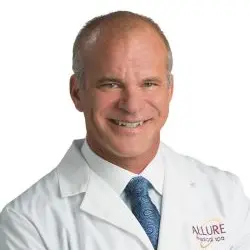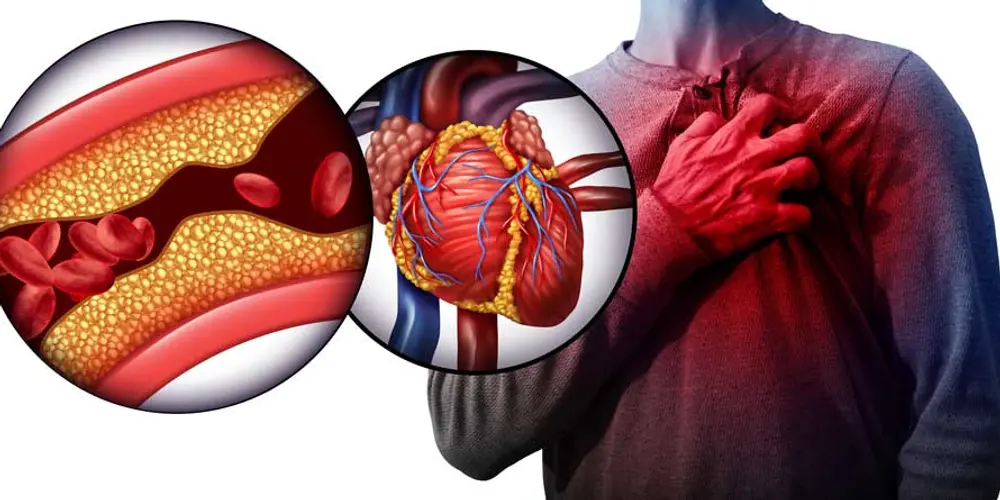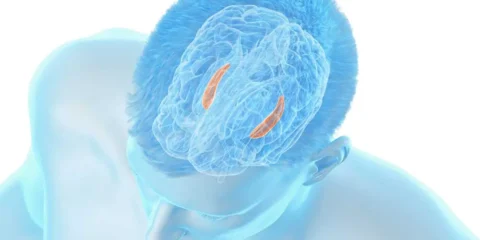This blog will look into the facts related to common heart problems. I talked about the three most likely conditions that lead to premature disability or death. They include neurocognitive decline, like, Alzheimer’s or dementia, cancer, and cardiovascular diseases such as heart attacks and stroke.
Healthcare and healthcare insurance revolves around managing diseases when they occur and relate to a very little degree prevention of disease. There is screening for cancers, doing EKGs, measuring blood pressure, measuring cholesterol, and other soft preventative measures.
Point to Ponder: Where Does Health Insurance Factor in?
Does your health insurance focus on reversing disease, when it occurs, or preventing it in the first place?
The Big Focus: Cardiovascular Age & Ways to Measure It
Here we will be focusing on cardiovascular aging due to health disorders such as hypertension, heart attack, stroke, and peripheral artery diseases.
The reality is that health insurance is very reactive. There are criteria for age or other risk factors that stimulate the need for screening, measuring your cholesterol. You might get a stress test done if you’re having chest pain or shortness of breath without explanation.
Cholesterol: An Indicator of Cardiovascular Aging
Cholesterol is not a great predictor of the presence or absence of cardiovascular disease. It is a marker of what you track that does not tell you if you have existing cardiovascular disease or if your cardiovascular age is older or younger than your chronological age. To learn more about the 3 Hallmarks of Aging , you can read my blog here.
Stress Tests
A stress test is even cruder. During this test, the patient is requested to exercise, generally on a treadmill, and hooked up to an electrocardiogram (ECG) machine. Afterward, the physician checks your risk of getting a heart attack. Wouldn’t it be nice to know that your risk for heart attack is a decade or so in advance versus a few months?
How to Measure the Probability of Having Cardiovascular Disease
Two commonly performed tests can be helpful to predict your probability of having current cardiovascular disease. One is a CT scan that detects calcium deposits in your coronary arteries, the arteries that feed your heart. It is a very inexpensive test that is easy to perform and interpret. The other test is called a CIMT or carotid intima-media thickness test. This test looks for the thickness of the lining of your blood vessels as well as fat or calcium deposits in the blood vessels.
The advantage to the calcium score over a CAT scan is that it is inexpensive, less than a hundred dollars, easy to perform, easy to interpret, and widely available. The limitation to a calcium score is that you cannot track the progression or regression of cardiovascular disease in response to therapy. Moreover, the calcium score is not accurate in African-American men and women or women regardless of race. These are huge limitations.
For screening tests, we wanted to be usable regardless of ethnicity or sex. We want a screening test to be eligible to show that things are getting better or worse over time.
Where CIMT Ultrasounds Function Best
A CIMY is an ultrasound that takes about 15 minutes, and it has to be performed by an expert vascular tech and interpreted by a physician experienced in reading ultrasounds. However, CIMT ultrasound tests are performed quite commonly and there are clear standards that we can utilize to determine if somebody has more advanced cardiovascular age than their chronological age or vice versa.
Additionally, we can track whether or not an intervention is causing stabilization of cardiovascular age, regression of cardiovascular age, or progression of cardiovascular age.
There are two aspects to the CIMT ultrasound test that have meaning in tracking the progression or regression of cardiovascular disease. There is the thickness of the lining of the vessel increases by about 0.01 millimeters per year. There is also what I refer to as “plaque burden”. The plaque burden is the presence of abnormal atherosclerotic plaques in the vessel lining that could be measured.
For example, an African-American female at age 55 would typically have a lining thickness of 0.668 mm. This is called the 50 percentile. If that person’s lining thickness is 0.764mm, she is at 75 percentile, and if it is 0.578mm, she is at the 25 percentile for her age but at the 50 percentile for a 45-year-old African-American woman.
So for a 55 -year-old African-American woman who had a 0.58 mm CIMT we would say that she is average for a 45-year-old African-American woman.If CIMT were 0.75mm, we would say that she is average for a 65-year-old African-American woman.
My Own Experience with CIMT Ultrasound Testing
If this concept sounds confusing, allow me to use myself as an example,
Although I have a strong family history of cardiovascular disease, I am going to share my heart disease reversal success story. My father had cardiac bypass surgery at 44 years of age, and he had a stroke at 45 years. He ultimately died of cardiovascular disease. I’ve always watched it, my diet and exercise, but I went through a period of two years where I had an unrelated illness that did some damage to my cardiovascular system.
10 years ago, I did a CAT scan calcium score which showed that my cardiovascular age was younger than my chronological age. But then, because of a period of an illness unrelated to cardiovascular disease, inflammation led to my genetic predisposition towards developing atherosclerosis.
In April 2019 the right side of my CIMT read much younger than my chronological age, while the left was at the 55 percentile. This made me 3 years older than my actual age. The left side disparity suggests it is related to inflammation and blood pressure. We base the cardiovascular age on the worst side which is generally the left. SEE GRAPHIC ONE
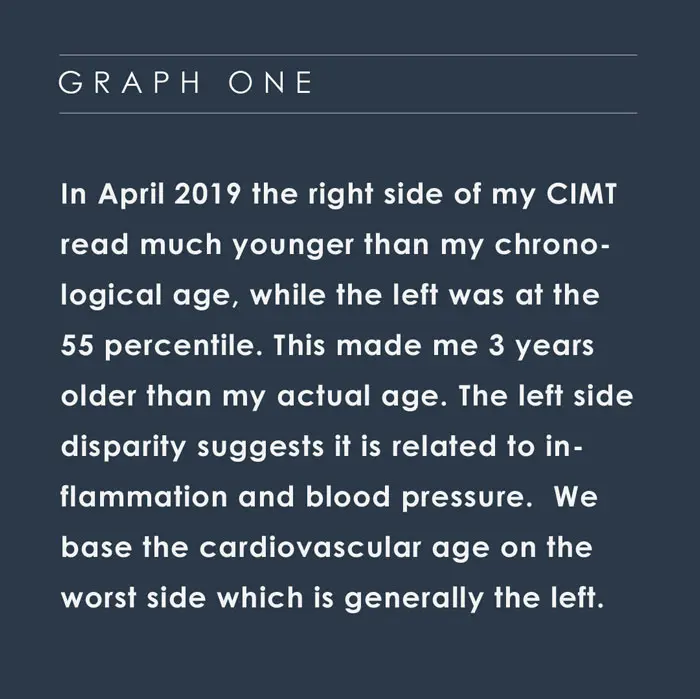
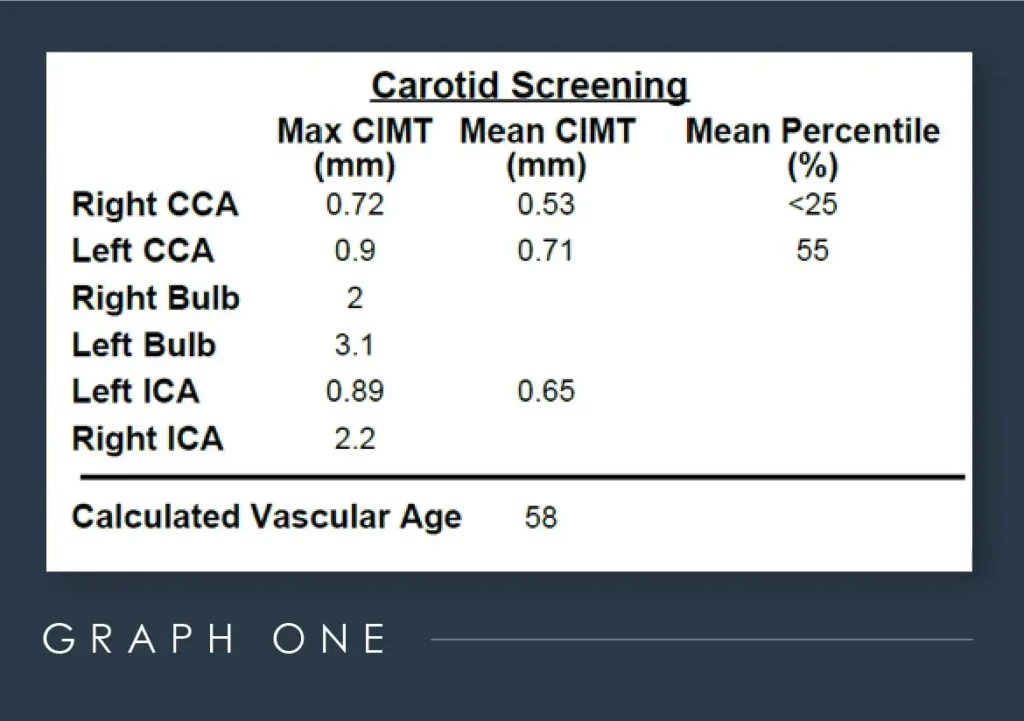
I did a two-year intervention which was a combination of specific cardiovascular activities, for instance, sauna two or three times a week, monitoring my nitric oxide level, taking dietary supplements which had shown to reverse the cardiovascular aging, and stepped up my exercise and helped in maintaining a healthy diet.
Two years after the intervention, my cardiovascular age was 14 years younger than my chronological age. In August 2021, 2.5 years later, my cardiovascular age was average of a 44-year-old white male. SEE GRAPHIC TWO
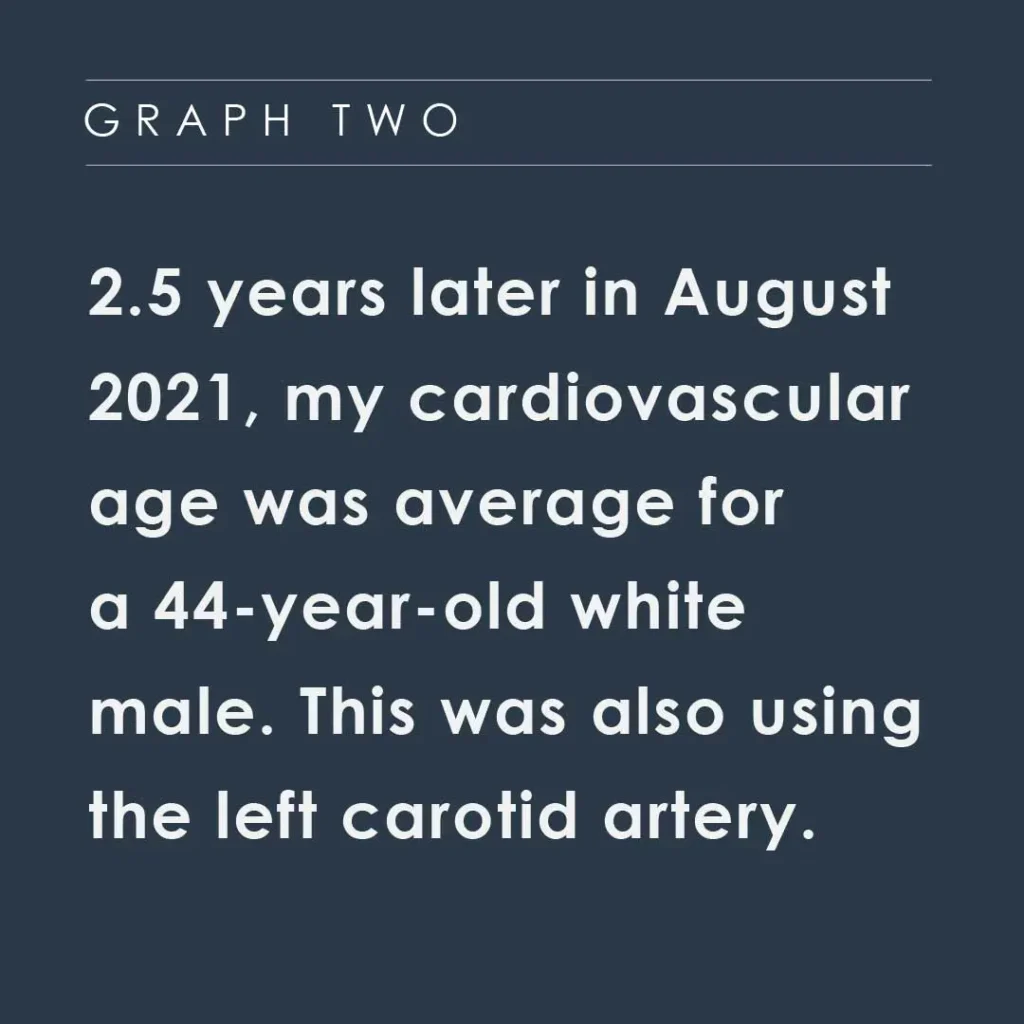
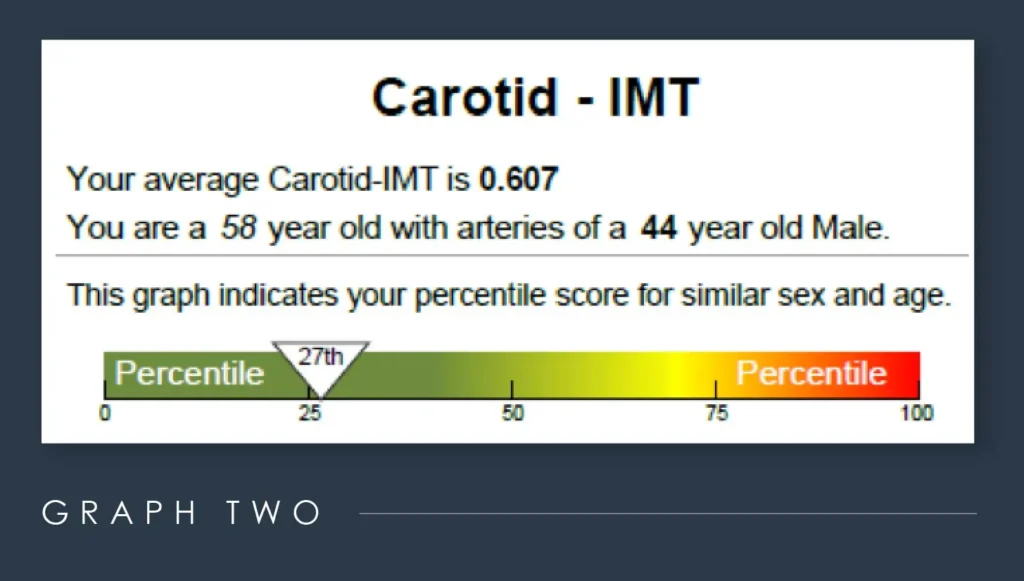
The BaleDoneen Method for Cardiovascular Intervention
Recently, our nurse Molly Landis RN became certified in a program called BaleDoneen Method that involves evaluating an individual’s genetic risk and CIMT and using lifestyle intervention tailored to the individual to reverse cardiovascular age. A study published in 2015 involved the nurse-managed cardiac prevention clinic over eight years, and the average CIMT reduced by 0.01 mm per year. In other words, when using the standardized nursing-led approach towards lifestyle intervention along with specific drugs, people’s cardiovascular age reversed by approximately one year for every year they lived.
To be prudent, after eight years of using the BaleDoneen method, people were eight years younger than they started from a cardiovascular age standpoint. Knowing this, I went on a much more aggressive approach to reverse 16 years in a two-year timeframe. My cardiovascular age was 58, and now it is 44 or 14 years younger, but I’ve aged two years chronologically due to why I say 16 years.
Key Take Away: Know Your ‘Real’ Age with CIMT Ultrasound Test
In summary, you may or may not have cardiovascular disease, but you do have options when it comes to advocating for yourself. The standard American healthcare practice is to wait until you start having chest pains or symptoms of a stroke and only then, you have to deal with it. Or you can test and see if you have any risk at all and if you do, modify your symptoms.
Thank you for reading,
Dr. Charles Mok Allure Medical Founder

